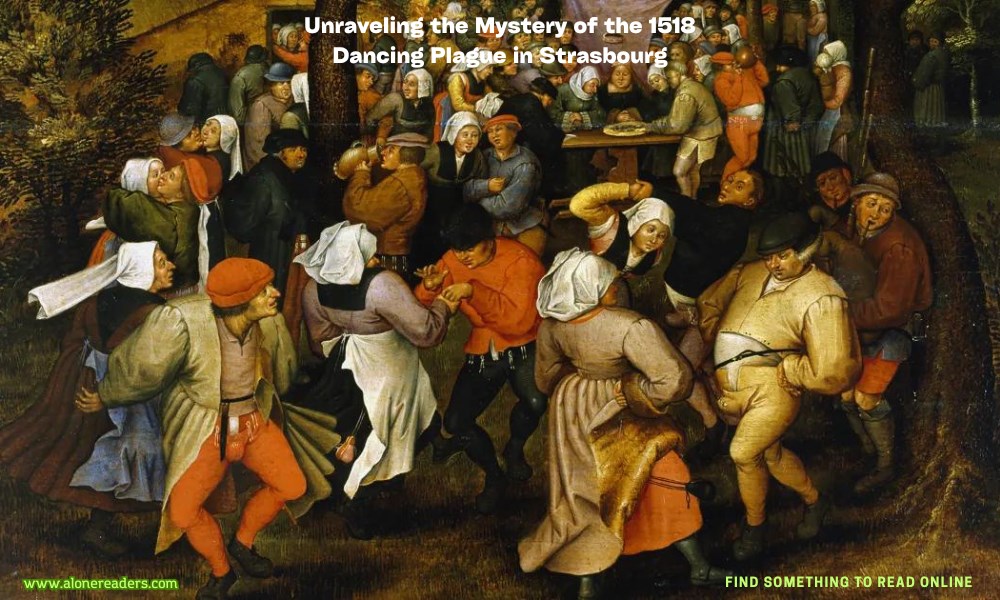
In July 1518, the streets of Strasbourg witnessed an extraordinary and chilling spectacle: hundreds of its residents were seized by an irresistible urge to dance. The phenomenon, later known as the Dancing Plague, would see people dance uncontrollably for days, with dozens ultimately dancing to their deaths from exhaustion, heart attack, or stroke. This perplexing event has puzzled historians and scientists for centuries, with theories about its cause ranging from religious fervor and mass hysteria to physiological reactions to mold poisoning.
The first case was recorded when a woman, Frau Troffea, began dancing fervently in a narrow street in Strasbourg. Within a week, dozens of others had joined her, and by August, the dancing epidemic had consumed as many as 400 people. Historical accounts describe how these individuals danced without rest, and how the local authorities were bewildered and unsure of how to handle the situation. They even went as far as hiring musicians and erecting a stage, believing that if the dancers continued to dance, they would eventually recover. However, this only exacerbated the crisis, leading to more deaths and increased public disturbance.
One prevailing theory about the cause of the Dancing Plague is that of mass psychogenic illness, commonly known as mass hysteria. This occurs when a group of people exhibit a flurry of physical symptoms suggestive of organic illness, but no discernible physical cause is found. Such episodes are often precipitated by extreme stress, which was abundant in Strasbourg in 1518 due to famine, disease, and religious turmoil. The collective stress and despair may have manifested physically among the highly superstitious and beleaguered populace of the city.
Another hypothesis suggests that the dancers were victims of ergot poisoning, which occurs when ergot, a mold that grows on damp rye and other grains, is ingested. Ergotamine, a compound found in ergot, is structurally similar to LSD and can lead to severe muscle spasms and hallucinations when consumed in large amounts. This theory is supported by the fact that symptoms of ergot poisoning, such as convulsions and hallucinations, closely mirror those exhibited by the dancers. However, this theory does not fully explain why such a large number of people would have consumed contaminated grain all at the same time or why the dancing continued for such an extended period.
Further analysis has suggested that the plague could have been a ritualistic event gone awry. At the time, dancing was not only a form of entertainment but also a way to ward off despair or invoke divine favor. It is possible that what started as a hopeful ritual to overcome adversity spiraled out of control, fueled by the superstitious and desperate atmosphere of the time.
Modern perspectives on the Dancing Plague are enriched by insights from the fields of epidemiology, sociology, and psychology, offering a multidisciplinary approach to understanding how such a bizarre event could occur. Researchers continue to examine the social and environmental conditions that could spawn such collective phenomena, drawing parallels to modern-day incidents of mass psychogenic illness, which, although rare, still occur.
Despite the advances in science and history, the exact cause of the Dancing Plague of 1518 remains a mystery. The event underscores the complex interplay of physical, psychological, and environmental factors in the health crises of the past. It also highlights the human propensity for extraordinary behavior under stress and the power of belief systems in shaping human responses to unexplained phenomena.
As we continue to delve into historical mysteries like the Dancing Plague, they remind us of our ongoing quest to understand the human condition and the lengths to which fear and uncertainty can drive us. The Dancing Plague of 1518, like many historical curiosities, serves not only as a window into the medical understanding and societal norms of the past but also as a mirror reflecting our ongoing struggle to understand ourselves and the sometimes inexplicable nature of human behavior.